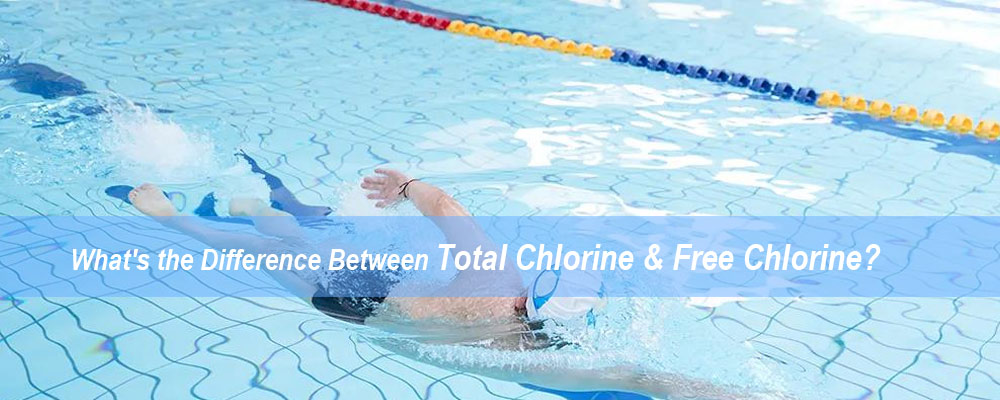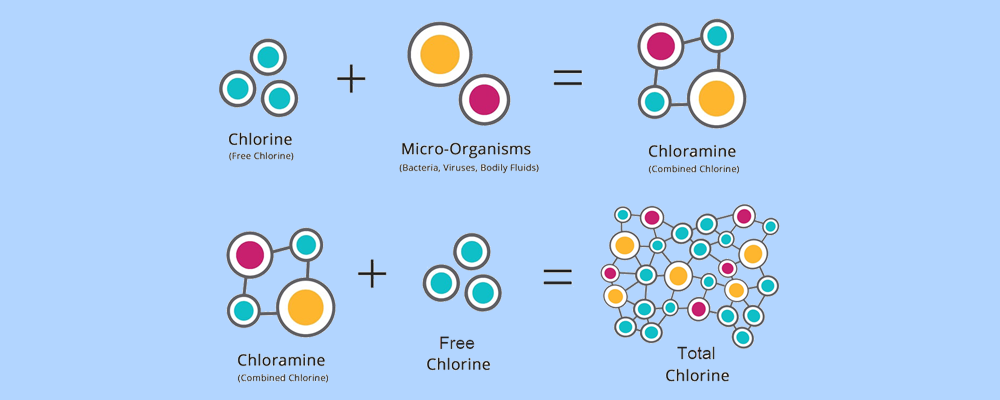Chlorine is a common disinfectant used in water treatment. Especially in swimming pools. It plays a vital role in destroying bacteria, viruses, and other microorganisms. Chlorine disinfectants work as hypochlorous acid and hypochlorite ions in water. When we discuss pool maintenance, two main terms often come up: total chlorine and free chlorine. Although they may seem interchangeable, these terms represent different forms of chlorine with different properties and effects on water quality.
Free Chlorine
Free chlorine is the main chlorine level to check when testing water quality. Free chlorine is the chlorine in the pool that has not yet come into contact with any contaminants. Essentially, it is the amount of chlorine in the water that is available for active disinfection.
When you add chlorine disinfectant to water, it dissolves into hypochlorous acid and hypochlorite ions. Therefore, when you add a new dose of chlorine to the pool, you are increasing the amount of free chlorine. The ideal range for free chlorine is 1-3 ppm.
Combined Chlorine
Combined chlorine is the product of chlorine reacting with ammonia, nitrogen compounds (pool contaminants, swimmer excreta, urine, sweat, etc.) when free chlorine concentrations are insufficient. Chloramines are the most common form of combined chlorine.
Chloramines are the source of the “chlorine smell” that many people associate with swimming pools. They can also irritate the eyes and skin and can cause respiratory problems, especially in indoor pool environments. They can also volatilize and dissolve into the water film on equipment surfaces, causing corrosion (even on stainless steel equipment). Combined chlorine also has disinfecting effectiveness, but it is very low and not enough to meet the needs.
Total Chlorine
Total chlorine refers to the sum of all chlorine species present in the water. This includes free chlorine and combined chlorine.
Free Chlorine (FC) + Combined Chlorine (CC) = Total Chlorine (TC)
Ideally, all the chlorine in the water should be free chlorine, which will result in a total chlorine reading that matches the free chlorine level. However, in real-world conditions, some chlorine will inevitably combine with contaminants, creating chloramines and raising the combined chlorine level. If the total chlorine level is higher than the free chlorine reading, then combined chlorine is present – the difference between the free and total chlorine levels will give you the amount of combined chlorine.
You should test your free chlorine and total chlorine levels twice a day, morning and evening, so that you can make adjustments.
Factors that affect chlorine levels
Several factors affect the total and free chlorine levels in water, including:
pH: The pH of the water affects the balance between hypochlorous acid and hypochlorite ions. Keep it in the 7.2-7.8 range.
Temperature: Higher temperatures accelerate the reaction between chlorine and organic matter, resulting in lower free chlorine levels.
Pool stabilizer: Especially for outdoor pools. If the pool does not contain a stabilizer (cyanuric acid), the chlorine in the water will decompose quickly under ultraviolet light.
Organic matter: Organic matter in the water consumes chlorine, resulting in lower chlorine levels.
Ammonia: Ammonia reacts with chlorine to form chloramines, which reduces the amount of free chlorine available for disinfection.
Post time: Jan-25-2025


